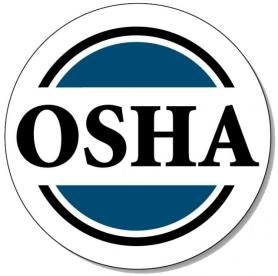On May 12, 2016, OSHA published significant amendments to its recordkeeping rule, requiring many employers to submit work-related injury and illness
information to the agency electronically. The amendments also include provisions designed to prevent employers from retaliating against employees for reporting injuries and illnesses at work. The information employers provide will be “scrubbed” of personally identifiable information and published on OSHA’s website in a searchable format.
The Basics
Every workplace with 250 or more employees will be required to electronically submit OSHA 300 Logs, 301 Forms, and 300A summaries on an annual basis. Workplaces with 20 or more employees in industries that OSHA has deemed hazardous and listed in the rule must submit OSHA 300A summaries to OSHA electronically on an annual basis as well. The information kept in the logs and on the forms remains the same, as does the calculus for determining whether an injury or illness is a recordable.
The new requirements will be phased in, requiring employers to electronically submit their 300A summaries on July 1, 2017 and their 300 Logs, 301 Forms and 300A summaries on July 1, 2018. State plans are required to adopt systems with the same deadlines.
The Problems
OSHA plans to rely upon computer software to remove personally identifiable information from these records. The software will supposedly remove all of the fields that contain identifiers such as the employee’s name, address, and work title, and to search the narrative field in the form to ensure that no personally identifiable information is contained in it. OSHA’s reliance on a computer system to detect every piece of identifiable information in a narrative is terribly risky and increases the potential for a data breach.
The publication of this information on a searchable database will allow the public, including the press, to seek out employers with what appear to be higher than average numbers of injuries and illnesses and continue the public shaming campaign so often relied upon by OSHA under the Obama administration. The public dissemination of this information also simplifies the process of unionization, permitting unions to identify possible targets based on perceived unsafe working conditions.
Although there are already whistleblower protections in place to prevent retaliation by employers when employees report injuries and illnesses, the new rule includes a number of additional anti-retaliation protections, including a provision that dramatically limits an employer’s ability to test for drug use when an employee has been involved in an incident. Under the new rule, post incident testing is to be limited to situations in which the possibility that the employee was impaired by drug use is quite likely to have contributed to the incident and for which the test can accurately identify impairment caused by drug use. In many cases, such as when an employee may have been impaired by marijuana at the time of the incident, employers are essentially left with no ability to test as there are multiple ways to test for the presence of the drug in an employee’s system, but no established standard for what constitutes marijuana impairment. This issue is increasingly important as states such as Colorado make recreational marijuana use lawful.
So What Should Employers Do Now?
-
Train employees on the new rules and when they go into effect.
-
Ensure that employees understand that they will not be retaliated against for reporting work-related injuries and illnesses and are, in fact, encouraged to report them.
-
Re-train the employee(s) responsible for injury and illness recordkeeping on the basics of recordkeeping and provide thorough training on the new rule with an emphasis on protecting personally identifiable information to the extent possible while remaining in compliance with the new regulatory requirements.
-
Review and revise drug testing policies to bring them into compliance with the requirements of the new rule.



 i
i


